The Viking raids are an important part of European history. The name “Viking” does not relate to a people but to a way of life. The poor agricultural capacity of Scandinavia soil forced some inhabitants to migrate, sometimes peacefully other times not so. Scandinavian people occupy large parts of British Isles and a region of North of France that became “Normandie”, “the land of the men from the North”. The first raid on British coast was described in 789.
Bibliography: Heath, Ian & Angus McBride. The Vikings. Elite Series 3. Osprey Military. 1985.
Cherilea
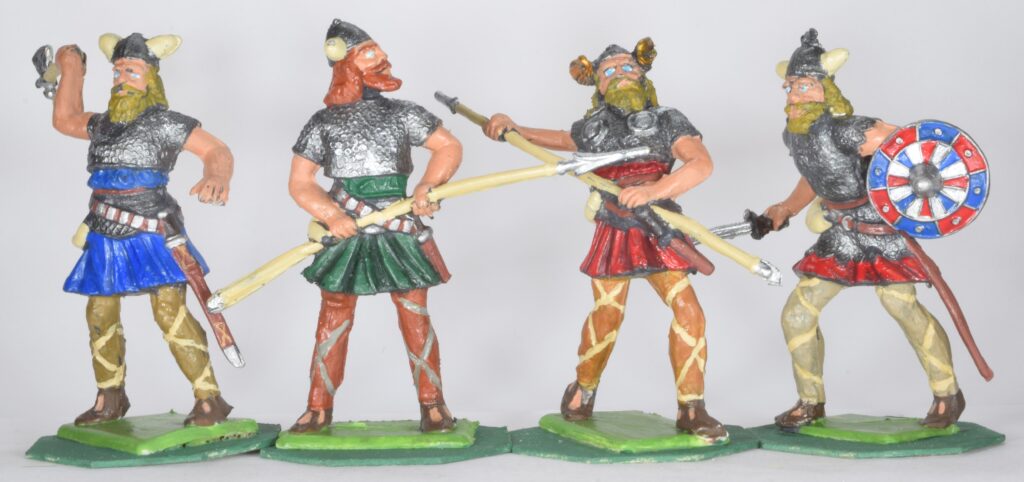
The Cherilea figures show the popular perception of Vikings looks, with helmets with horns. This image is a creation of 19th century romantic authors and not true. The last figure was given a round shield that looks very much a dart target. It seems that this Viking assaulted the local bar and robed the dart practice target… The modelling quality is not up to the new makers.
Conte
The figures are very good, nicely sculpted and dynamic.
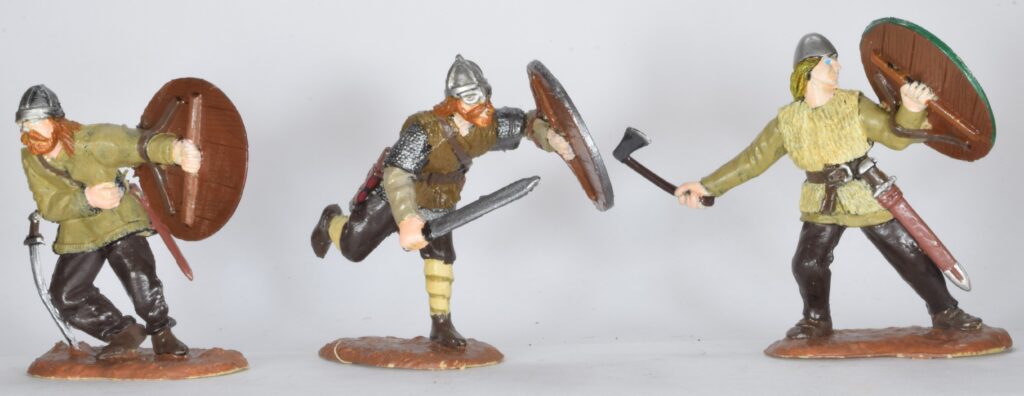
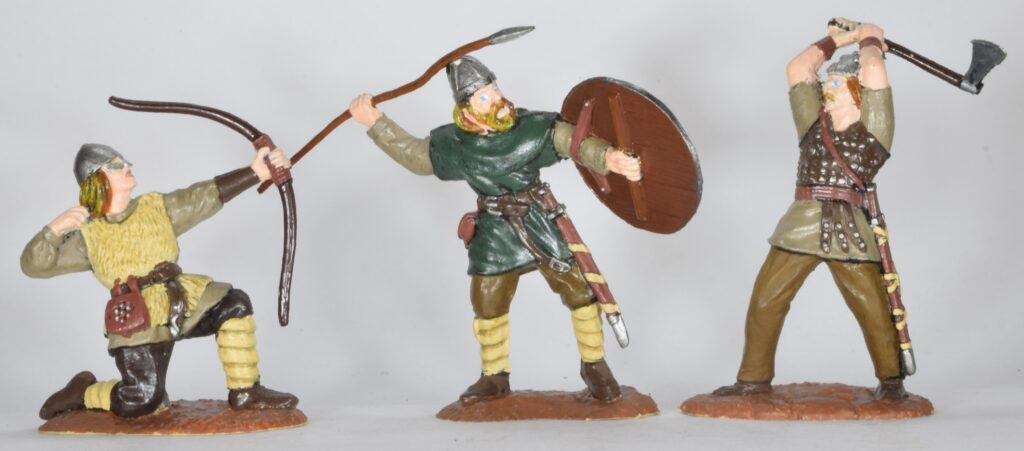
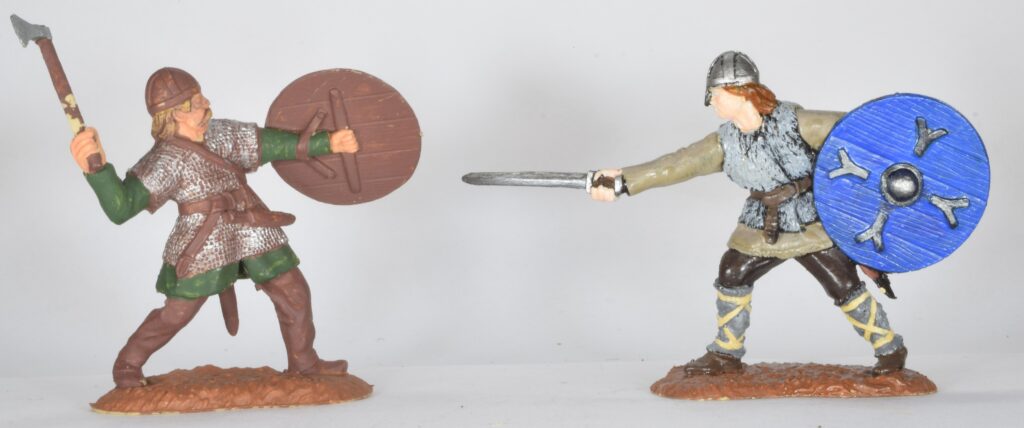
Left figure painted by Ricardo Leite.
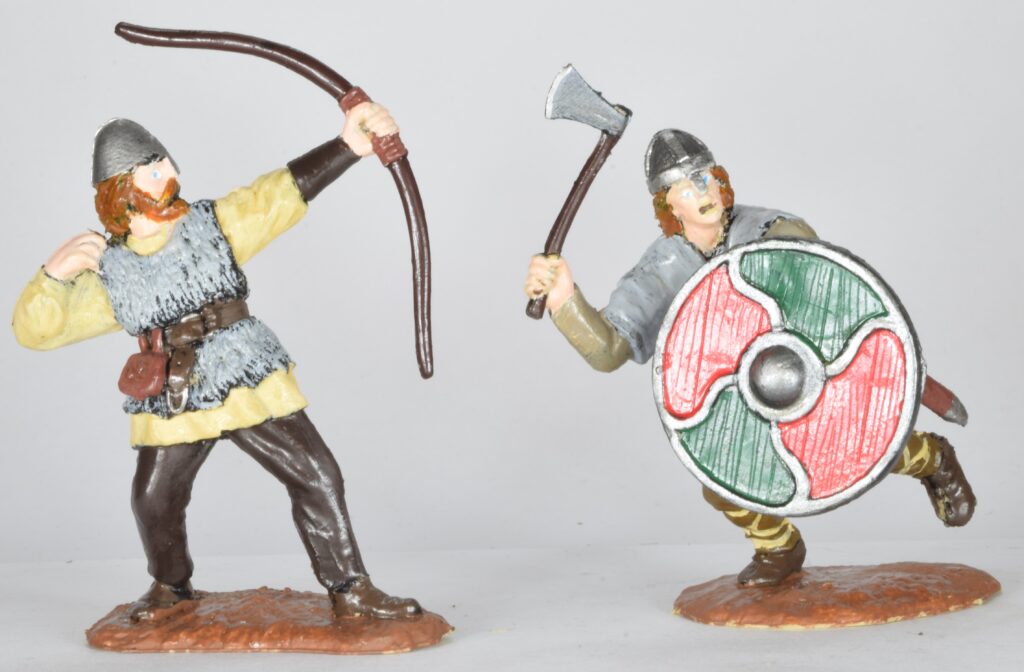
Shields are very well done and easy to paint.
DSG
This Argentinian company makes copies of Britains figures but also some original sculpts. The bases are similar to those from Britains Deetail series but in plastic.







Elastoline
The figures of this German company have a clear romantic inspiration. As usual the plastic is hard and fragile.
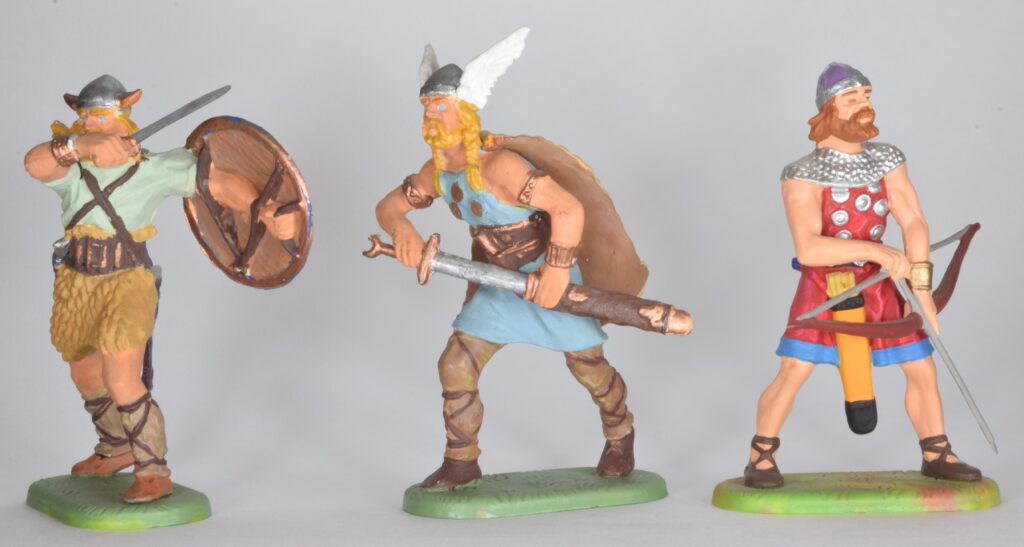
The decorated helmets are not historically correct. The figures are well sculpted. Original painting.
Emhar
The figures are well sculpted and show good research with various weapons, with a majority of axes.

Nice figures in hard plastic. The second figure looks like a chieftain.
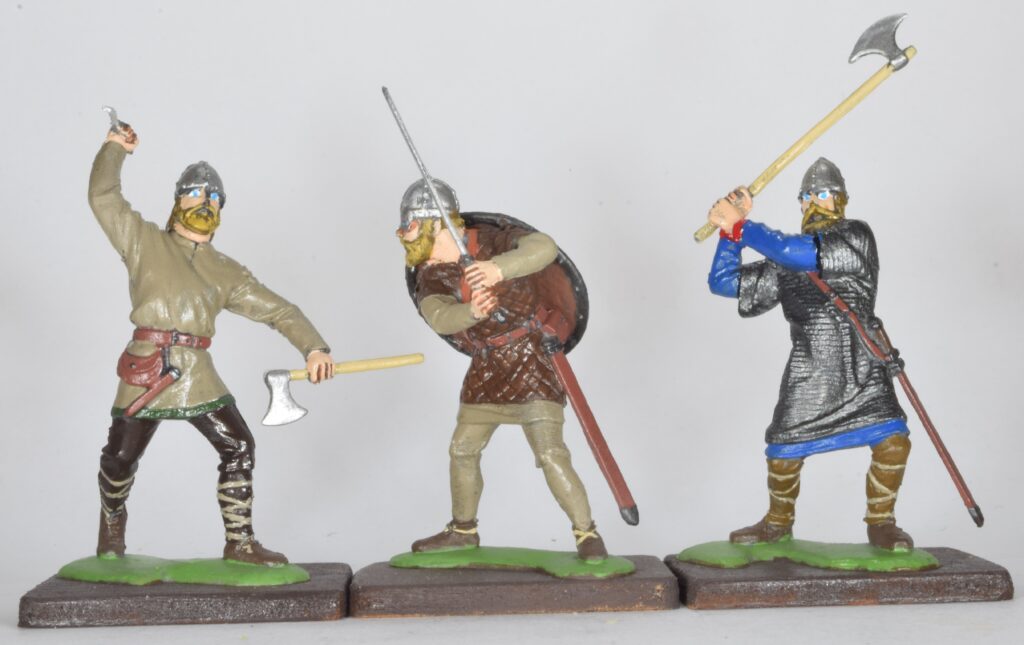
Very dynamic figures. The last is equipped with chainmail.
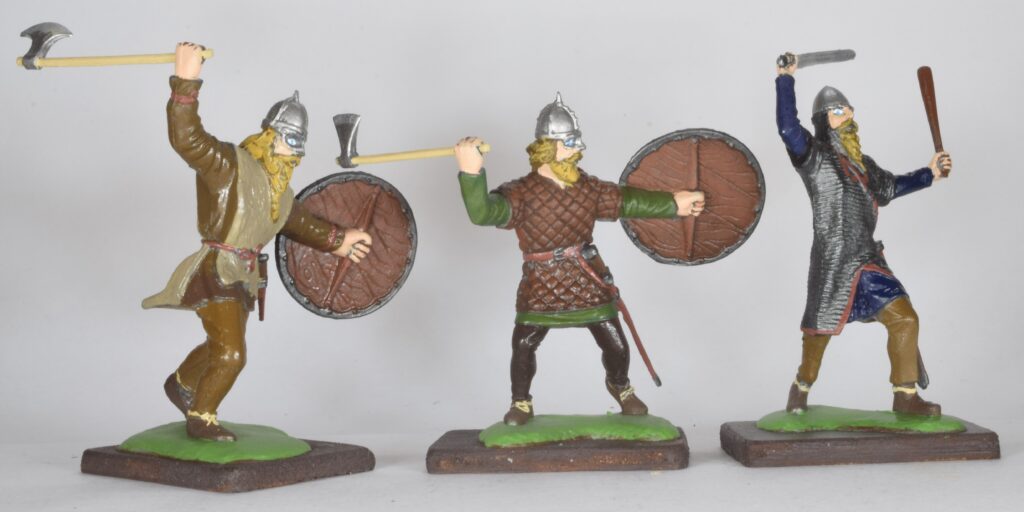
The axe was a very common weapon as swords were much more expensive.
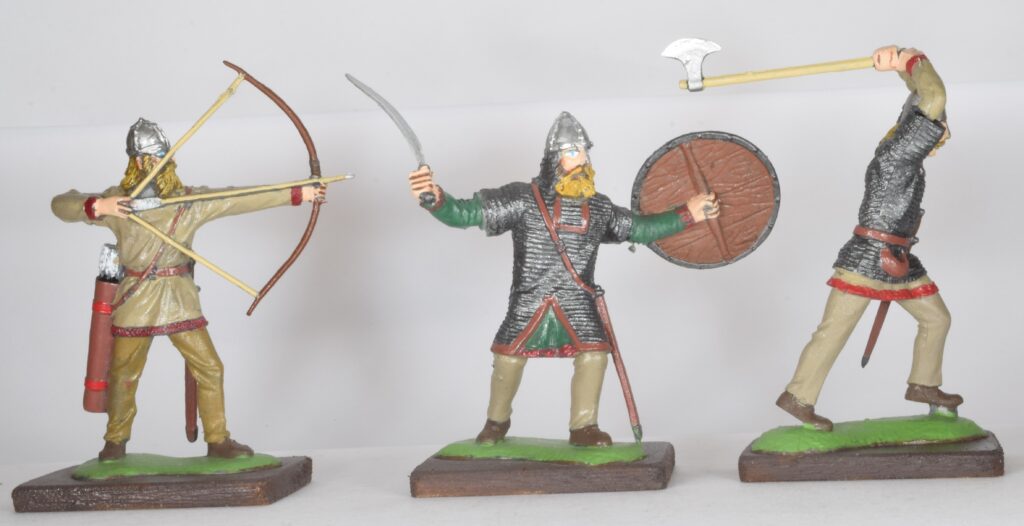
The bow was probably not a very common weapon.
Timpo
This company produced very nice swoppet type figures
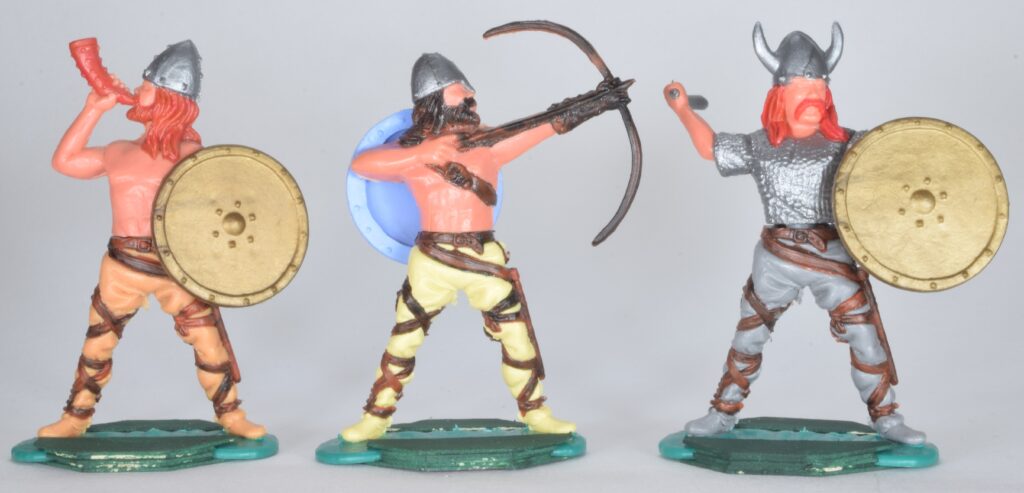
Very nice touch in the different hear colour. On the hand they could not avoid put some horns on the helmet.
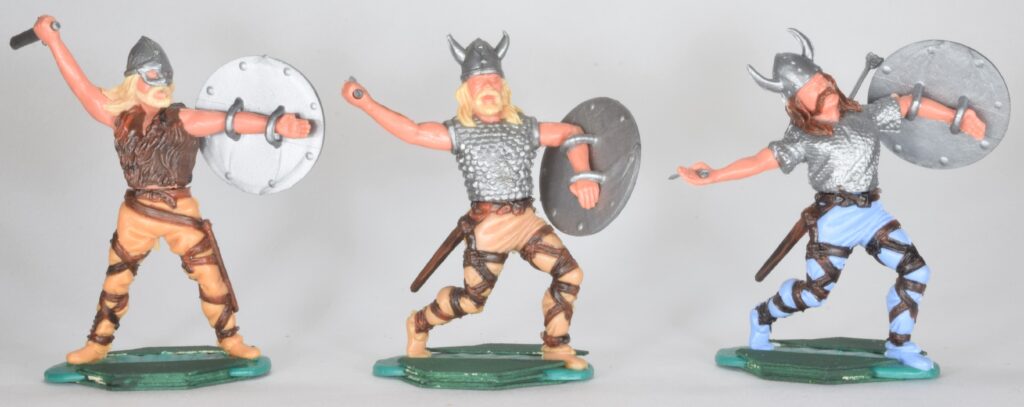
Two blond Vikings in this group. I like very much the fur corselet. I have three different legs (including one for horse riding) in my collection and six different torsos. The helmet with “googles” is historically correct.
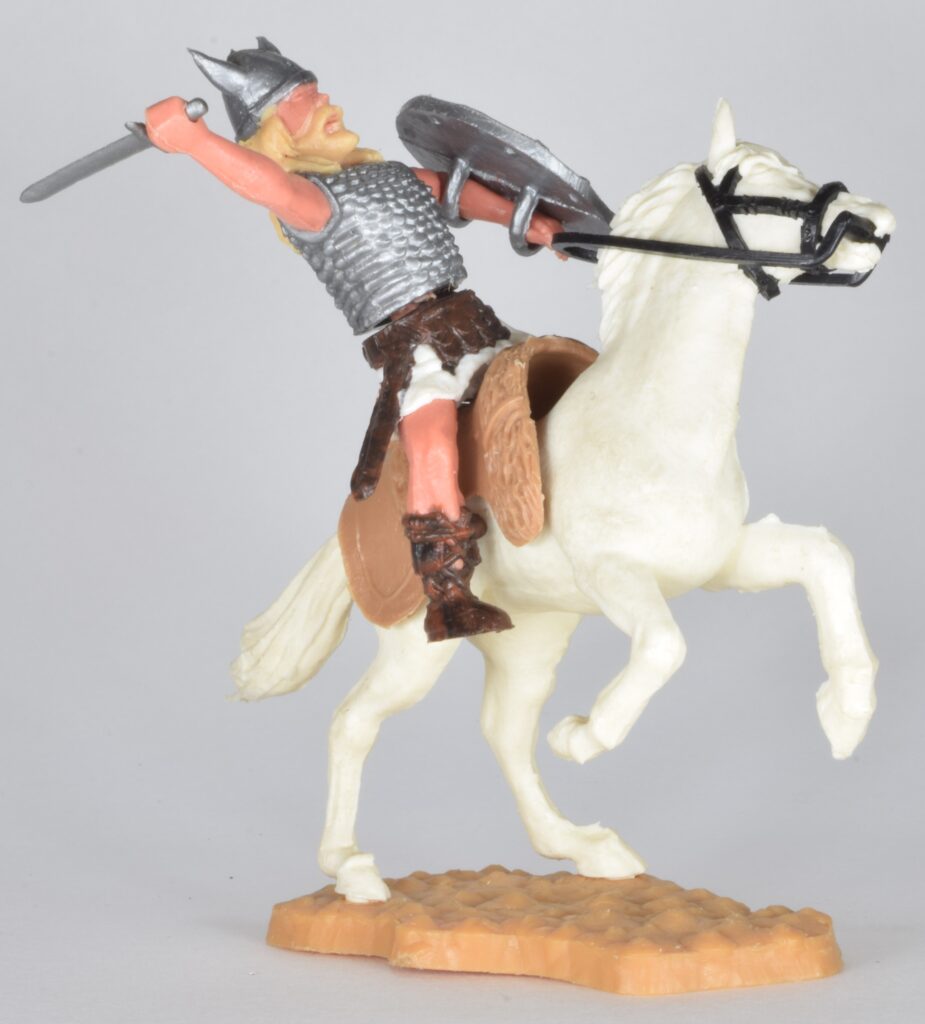
Cavalry was not a very common part of Viking armies. This could change after they were able to settled in some regions of Europe. The figure is dynamic and the fur saddle is nice option.
It is important to notice that albeit very nice figures the presence of horned helmets and the lack of axes are negative points. The figures had bases larger than those from other Timpo series which improved the stability. Whatever deficiency we can see these are classic figures and look amazing in anyone´s shelf.
